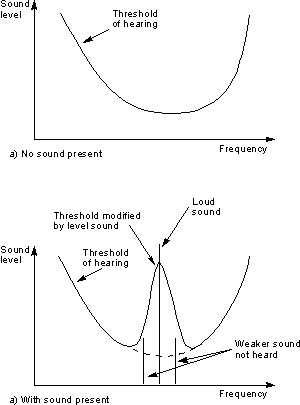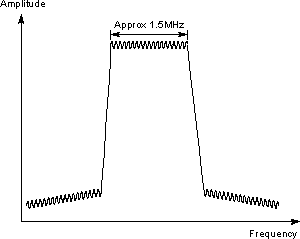What is DAB Digital Radio Tutorial
- overview or tutorial giving information about the basics of what is DAB,
Digital Audio Broadcasting, a form of radio broadcasting technology now used in
a number of countries.
DAB Digital Radio, which is also known as digital audio
broadcasting, is an entirely new system for broadcasting and receiving radio
stations. As the name indicates signals are broadcast in a digital format to
enable CD quality to be achieved. People who have heard DAB digital radio have
commented on the significantly better sound quality and "presence" of the new
radio system. Also it does not suffer from the multipath effects often
experienced on FM transmissions and as the system uses what it known as a single
frequency network (SFN) there is no retuning required when moving from one
coverage area to the next.
In addition to this many new services can be carried on these
digital radio transmissions enabling the new system to be compatible with the
21st century. The digital radio signal carries data alongside the audio, and
this enables text and images to be transmitted alongside the audio to enhance
the listening experience. In this way it is possible to transmit the title of a
track, and a picture of the artist whilst the some music is being transmitted.
It is also possible to have news scrolling across the bottom of the screen used
on the radio.
DAB digital radio is now well established in many countries
around the world from the UK and Europe to Canada, Australia and many other
countries. Wit the facilities that digital radio offers it is now being accepted
and listeners are switching to these new digital radio transmissions in the
areas where they are available.
How DAB digital radio works
To produce a digital system that operates satisfactorily
under the conditions required for digital radio a large amount of work was
undertaken in the development stages. Some existing digital techniques were
investigated but it was realised these had significant limitations for this
application. One of the major problems was that many receivers would use
non-directional antennas and as a result they would pick up reflected signals.
These would be delayed sufficiently for the data to become corrupted.
Additionally the bandwidth required to accommodate a full stereo signal would
need to be reduced to ensure efficient use of the spectrum. The technical
standards for digital radio were developed under the auspices of the European
Eureka Project 147. This consortium consisted of manufacturers, broadcasters
research bodies and network operators.
There are two main areas of the system that are of interest
in digital radio: namely the modulation system and the audio digital encoding
and compression system.
The encoding and compression system is of paramount
importance. For the system to be viable the data rate has to be considerably
reduced from that of a standard CD. The digital radio system adopted reduces the
data rate down to 128 kbits / sec, a sixth of the bit rate for a similar quality
linearly encoded signal. To achieve these reductions the incoming audio signal
is carefully analysed. It is found that the ear has a certain threshold of
hearing. Below this the signals are not heard. Additionally if a strong sound is
present on one frequency then weaker sounds close to it may not be heard because
the threshold of hearing is modified. By analysing the incoming audio and only
encoding those constituents that the ear will hear the significant reductions
can be made. Further reductions in data rate can be achieved by reducing the
audio bandwidth. This is implemented on some channels such as those used only
for speech.

Fig. 1 The threshold of hearing of the human ear.
The other key to the operation of digital radio is the
modulation system. Called Coded Orthogonal Frequency Division Multiplex (COFDM)
it is a form of spread spectrum modulation that provides the robustness required
to prevent reflections and other forms of interference from disrupting
reception.
The system uses about 1500 individual carriers that fill
around 1.5 MHz of spectrum. The carriers are spaced very close to one another.
Interference between the carriers is prevented by making the individual signals
orthogonal to each other. This is done by spacing each one by a frequency equal
to the data rate being carried. In this way the nulls in the modulation
sidebands fall at the position where the next carrier is located. The audio data
is then spread across the carriers so that each carrier takes only a small
proportion of the data rate. This has the advantage that if interference is
encountered in one area then sufficient data is received to reconstitute the
required signal. Guard bands are also introduced at the beginning of each
symbol, and the combined effect is such that the system is immune to delays
consistent with signals 60 km further away than the primary source.

Fig. 2 Spectrum of a Digital Radio Signal
With this level of immunity, the system can operate with
other digital radio transmitters operating on the same frequency without any ill
effects. This means that it is possible to set up a system where all the
transmitters for a network operate on the same frequency. This means that it is
possible to set up single frequency networks throughout an area in which a
common "multiplex" is used. Even though it may appear that this is a recipe for
poorer reception caused by several transmitters using the same frequency, the
opposite is actually true. It is found that out of area signals tend to augment
the required signal. It also means that small areas of poor coverage can have a
small transmitter on exactly the same frequency filling in the hole and further
improving reception in adjacent areas.
A further advantage of this digital radio system is that it
requires less power than the more traditional transmitters. For example those
that carry the main BBC FM networks from the main transmitting sites like
Wrotham in the South East of England run at powers of around 100 kW for each of
the four main services that are transmitted. The cost of the electricity alone
is a significant factor in the BBC's running costs and the power reductions will
bring huge savings, not to mention the environmental benefits.
DAB band allocations
In the UK a spectrum allocation between 217.5 and 230 MHz has
been reserved for digital radio transmissions. This gives a total of seven
blocks of 1.55 MHz, each able to carry a multiplex of services. In other
countries as well spectrum is being made available. Within Europe spectrum is
being made available either in Band III as in the UK or in L band between 1452
and 1467 MHz. The upper part of the band between 1467 and 1492 will be reserved
for satellite delivery of digital radio.
DAB radio equipment
One of the main problems with the initial launch of digital
radio was the availability of the equipment. A large investment had been
required from the equipment manufacturers. The heavy reliance on digital signal
processing techniques meant large development programmes were needed to develop
the equipment. There were also problems with the fact that the early
implementations required high current levels. These solutions would not have
been suitable for portable receivers, and for in car and home applications heat
dissipation was a problem. Furthermore the multi-chip solutions made the
equipment large and bulky as well as making the manufacturing costs high.
Manufacturers soon solved the problem. Specific chip sets for
DAB were developed and these enabled costs to be reduced dramatically from the
initial ones that were seen so that DAB is no where near as high as it was when
compared to FM receivers.
Many people now comment on the significant enhancements that
DAB digital radio brings. One typical example was when a friend walked into a
shop and noticed the music playing had an increased presence. He assumed it must
be DAB, and this was confirmed when he asked. Others have noticed the seamless
performance when in a car. None of the intermittent hissing when travelling
through a marginal area between the two transmitters.
Accordingly DAB digital radio is now the broadcasting medium
for the 21st Century.
|

